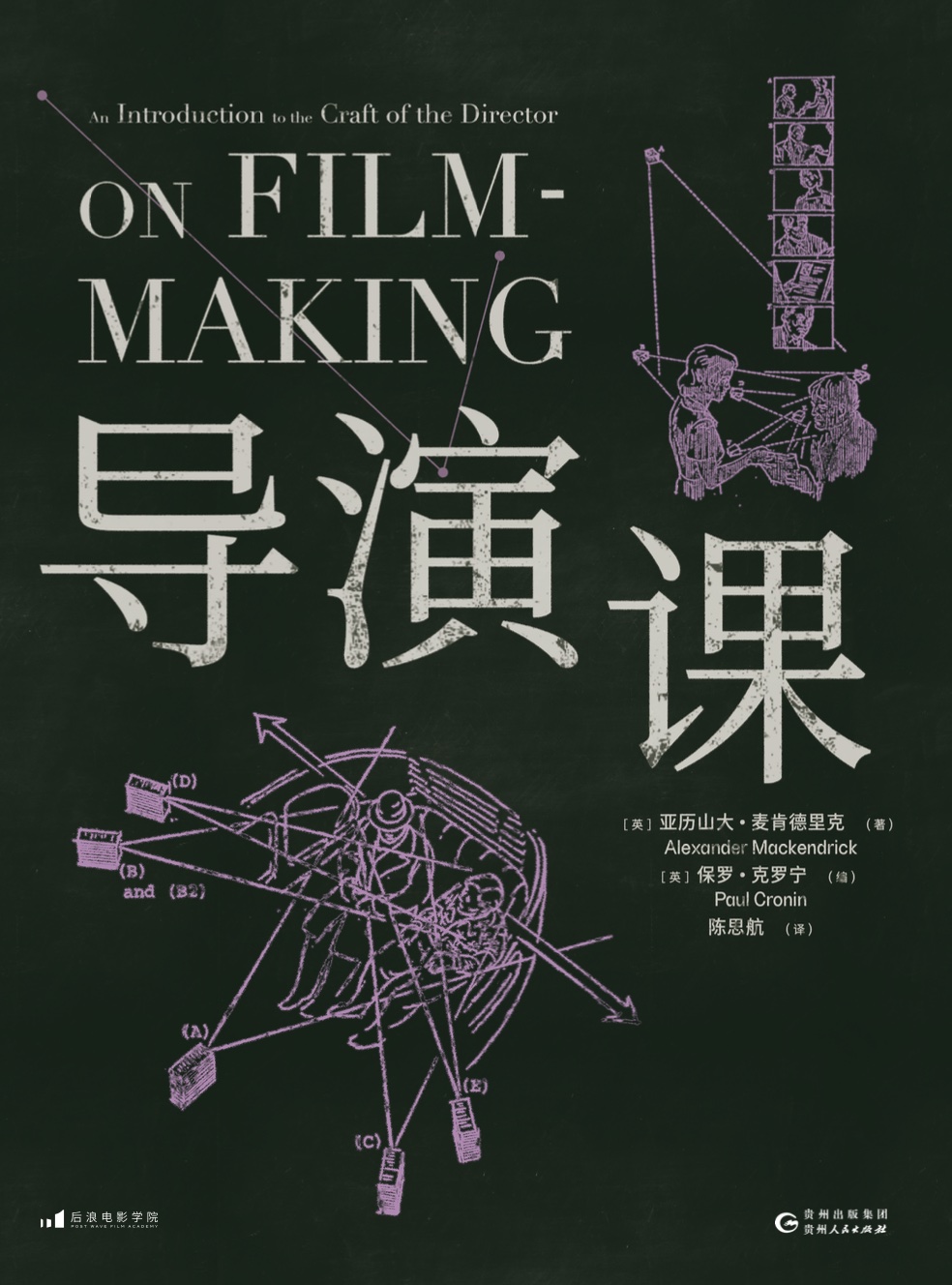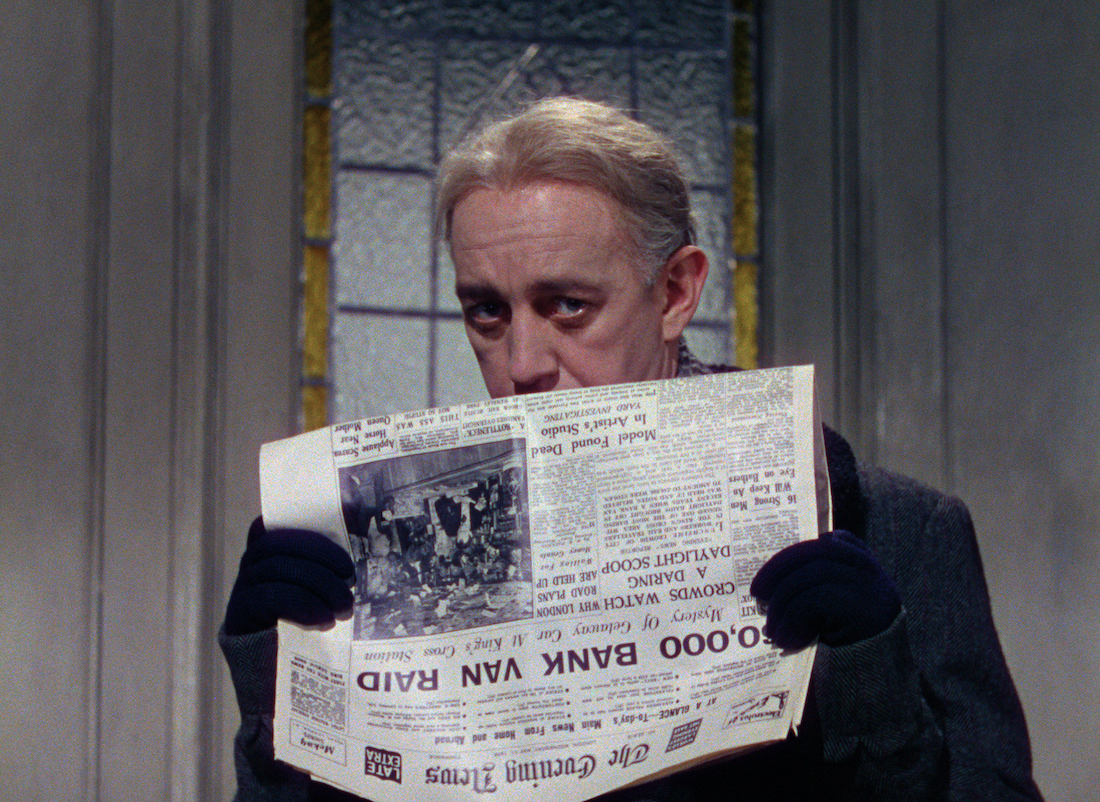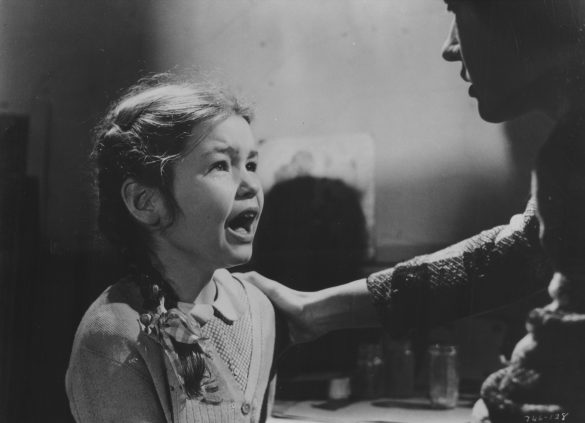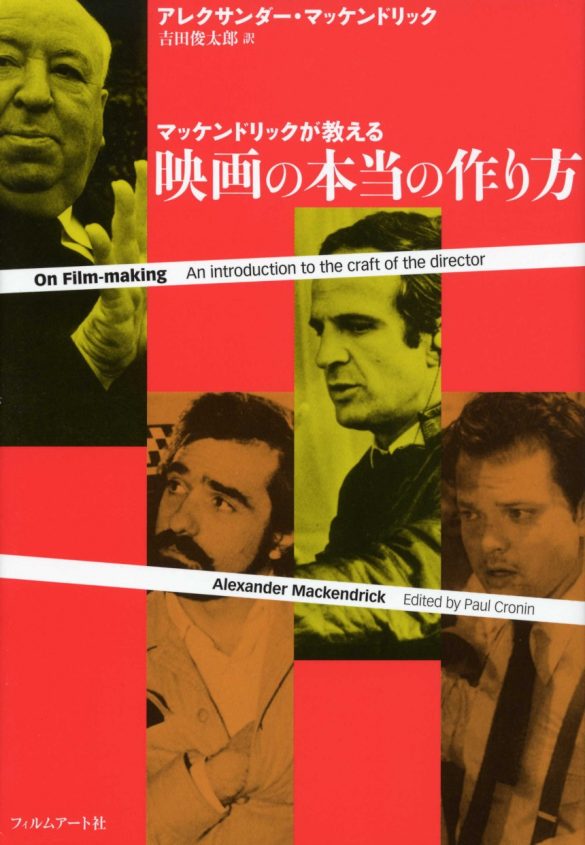On Film-Making: An Introduction to the Craft of the Director
When Not to Write a Shooting Script
Filmmaking is one continuous process. The stages overlap. Though usually done by different people in the professional world, the many technical jobs involved in producing a film merge into each other, and when a good film materializes it is a unity: the parts are so welded together that no one really knows who did what. The members of a film crew should feel like the man a friend of mind met some weeks ago. “Sandy Mackendrick?” the man said. “I know him. He worked on two of my films.” I had indeed worked on two films with him: he was the stand-by carpenter, and is a first class film carpenter because he knew that the films were his films as much as anybody else’s.
A script is never the sole domain of either writer or director, and only when both are true collaborators will the resulting film function as well as it possibly can. Even though the final form of a screenplay is not a set of mimeographed pages but a finished film, the director’s role should never be considered as starting during casting sessions or once he walks onto the set, nor even once the scripting process has been completed. Rather, it must be rooted in the very origins of the first dramatic conception. Screenwriting is a reductive process, a gradual condensing and tightening of the structure found in an original work. It is a procedure during which the director will, for example, spend time with the writer, indicating to him how the ideas contained within his dialogue can be made more economically by action and incident through the use of cinematic language, something often exploited most efficiently at the editing bench.
Important to understand here is that one of the writer’s jobs is to be the connection between two other personalities: the director speaking the film ‘language’ and the performer discovering the role. In fact, among screenwriters I have worked with a few of the most talented are former actors. The great strength of the writer who has a good understanding of acting is an ear for playable dialogue, because words always need to be more effective in the mouth of the actor than on the page. But more important than this is that even before they invent any dialogue, many writers act out the physical behavior of their characters in their imagination. By doing so, non-verbal actions (as well as any dialogue deemed absolutely necessary) as written on the page emerge as a direct expression of impulses, feelings and thoughts. In this sense, the screenplay becomes a point of departure for the interpretive actor from which he or she has to work backwards so as to retrace the writer’s imaginative ideas and impulses that originally gave birth to the scene. Writing, it is said, is acting in your head.
In a sense, writing, acting, directing and editing are all performing skills. The competent director follows the same process as the actor: he goes back to the creative origins that the writer has supplied, collaborating with the actor in re-discovery of the characters and situations that were originally images and voices in the mind of the writer. And the editor, who is presented with very tangible visible and audible records of these images and voices must capture all over again the evolved and still evolving make-believe. One of the best editors I ever worked with was a former actor. I used to watch him as he sat at the editing bench, running the unedited footage over and over again. While he did this you could see on his face that he was absorbing the actions and words of the actors, instinctively acting along with their performances until he found the precise frame where the actor was, essentially, telling him to make the cut. A good editor will even re-discover magical elements of the footage that the writer, actor and director didn’t even know they had put there.

I have never directed a film on which I did not myself function as close collaborator of the writer or writers. In the majority of instances I assisted in the construction of the story and also helped write drafts of dialogue, or for various reasons spent time rewriting dialogue during the shooting when the screenwriter was not available. I have, in fact, never made a film in which the dialogue did not require some degree of editing either at the shooting stage or in the post-production period. But this is no more than a natural part of the group process of filmmaking. In the ideal situation (seldom, if ever experienced), the collaboration of a writer and director would start at the very inception of the subject and involve the writer being present throughout, an observer of the rehearsals who could not only edit his own text, but make suggestions to the director and actor on the interpretation of the scene.
As such, I have asked and taken screen credit for only those screenplays on which, at a quite early stage, I worked alone on a complete version of a full draft of the film. In fact the films of mine that seemed most satisfactory to me were usually developed in this way. As a writer (not an auteur but an honest-to-God-word-merchant), while preparing a script that another director was to work on, I would make the necessary mental effort to think of that future other director even though I was pretty sure it would actually be me. It was quite helpful at some point to call in a new screenwriter who was, as inevitably happens, quite critical of this draft and would insist on rewriting substantially. With this newcomer on the scene I would be forced out of the role of the original author, required to look objectively and critically at my own initial efforts. Since I’d had the privilege of selecting this new writer and had chosen him to supply talent, skills and insights that I felt I lacked, this was not too difficult. I could easily divorce myself from too passionate an attachment to the original draft.
Many film students seem to be intoxicated with the idea of the auteur in the cinema, the idea that a commercial feature film can be regarded as the work of a single individual in the way that a painting, a novel or even a musical might be. Though this is a very misleading concept, it appears that few students are enthusiastic in their attempts to collaborate. It is actually my impression that students generally have no real desire to be screenwriters at all. At least, not just screenwriters. Those students who come to CalArts interested in narrative/dramatic work often have in mind the goal of being directors, not writers. Moreover, the beginning filmmaker is very apt to harbor (unrealistically, I would suggest) the immensely attractive fantasy of being what is called in the industry a “hyphenate” – a screenwriter/director – without having been subjected to the painful experiences of studying these two crafts separately.
The overwhelming temptation of many students when faced with problems of dramatic construction in the scripting stage is to dodge the real challenges by fantasizing about the much more pleasurably (and indeed easier) problems involved in actually shooting his film. As such, the particular passion of many students is to work, from the start, on their own stories in shooting script form (those containing precise shot, framing, and editing details, including the staging of actors and camera angles) before putting their ideas on paper as either a screenplay (dialogue with basic expository explanations), or even a treatment (the bare bones: plot and essential action of a story). Do not fall for any of this. Get your screenplay right as a screenplay before you let yourself off the hook by indulging in the delights of being a director.
Every year I try to persuade students that at the early stages of devising a story for the screen even the dialogue-based screenplay format can be a mistake. I regularly fail in this effort. Let me explain my bias. It is common practice that in the early stages, your story is in some other form. It might be a novel or a short story, it might even be a series of newspaper articles (for example On the Waterfront). On occasion what might be required is an adaptation of a play written for the stage, though many writers will tell you that when this is so then the task of writing a coherent screen version is particularly difficult. It may even be necessary to throw the original theatrical script away and start again from scratch. In such circumstances, a writer may find that before embarking on a screenplay full of dialogue it is better first to prepare a sketch in the form of a story treatment. Written in prose form, a good treatment might be as long as the intended screenplay, though will always be more literary in form, even reading like a short novel. It can reveal very clearly the potential of a story with as yet undeveloped dramatic structure or characterizations and can be a very useful overview of problems that will have to be faced at a subsequent point of the process. Moreover, starting in prose means focusing on two crucial elements of screenwriting. First, the final work will inevitably contain less dialogue. Second, the themes of the story are more likely to rise to the surface of your mind as you write.

The treatment form offers real opportunities for the writer to express himself directly to readers, much as a novelist does. Not such a rigorously disciplined and restrictive form as the screenplay, it allows him real freedom and more scope. The best case made for this kind of literary original as a precursor to material for a film has been made by Graham Greene, a novelist who has worked successfully in cinema. In the preface to the published version of his original prose draft for The Third Man, Greene describes how he worked out the original story with the director (Carol Reed) during months of close and intimate collaboration, always thinking of the story only in cinematic terms. The written story, he insisted, was never intended to be published. It was nothing more than material for a film.
To me it is almost impossible to write a film play without first writing a story. Even a film depends on more than plot, on a certain measure of characterization, on mood and atmosphere, and these seem to me almost impossible to capture for the first time in the dull shorthand of a script. One can reproduce an effect caught in another medium, but one cannot make the first act of creation in another medium. One must have the sense of more material than one needs to draw on. The Third Man therefore, though never intended for publication, had to start as a story before those apparently interminable transformations from one treatment to another.
Let me use my personal experience to explain why, as a starting point, a treatment is preferable to a first draft screenplay. I learned much of what I know as a contract writer at a British film studio, hired on a year-to-year basis as a member of staff and given assignments as they arose. This usually meant working on a project that had already been given approval for development, whereupon a writer was given six weeks to produce a new draft of a script the producers insisted needed more work. Sometimes this was at the request of the director who had just been taken on and had ideas for specific changes, or because of casting issues (perhaps a star would not commit to the venture until assured that certain changes are made).
Remember that postcard on my wall? “Screenplays are not written, they are re-written and re-written and re-written.” The result of this is that today, the credits for a screenplay are rarely given to a single writer. When, after a number of years, I graduated to the position of director, I began working on projects the studio assigned to me. Quite soon I yearned to be the initiator of my own work. When this was the case, I realized it was wiser to begin my original ideas in a loosely-structured treatment form. Why? Just as few directors relish the idea of writing a script for somebody else to direct, many writers are not enthusiastic about writing a screenplay based on somebody else’s carefully plotted treatment of a story idea. Writers prefer to work on their own ideas and generally find it harder to get enthusiastic about characters and situations that are not of their own invention.
Through experience of writing revised versions of other people’s screenplays I learned how important it is for the writer to make the subject his own, but at the same time knew that a director can often persuade a good writer to work as his collaborator if he offers him a project in a form that is, to a great degree, not yet frozen in its fully dialogued form. A treatment written by a would-be director might give strong indications as to the ideas behind the plot and even contain details of the story itself, but leaves the hired screenwriter with much difficult and demanding work still to do. If it is understood, as I believe is proper, that the director is not expecting a screenplay credit (which means the writer will have a chance to get the coveted solo screen credit), many writers will seize the chance to take over a story in such an inchoate form and successfully make it their own. The director has thus achieved his aim of fashioning the structure of the subject in its earliest form and then handing the story over to a writer who can bring his own ideas and vision to the project. When this works the ideal situation is that both writer and director believe that everything effective in the completed film was their own contribution. (One thing to note here is that at a later stage, through camera coverage and editing, a director who knows his craft can essentially rewrite without altering a single word. Providing there is sufficient coverage of a scene, it is usually possible to edit the footage so it even plays against the spoken text, emphasizing subtext instead. Curiously, when the director manages this trick successfully, the screenwriter may be hardly aware of how it has been achieved.)
A writer who seems over-eager to indicate just how exciting, in cinematic terms, a scene will be is apt to alienate a director reading his screenplay. As it is put down on the written page, a good script does not concern itself with technical matters. Eager to show his competence as a director (instead of a screenwriter), the student is liable to introduce into his writing technical jargon that is meant to demonstrate his acquaintance with problems of production. I urge you to avoid this, for these things are not his business. While the impulse of a good director will be to scratch it all out, it also clearly indicates to the producer that you are a bumbling amateur. In addition, a concern with technical problems is usually a distraction from the much more important challenge of storytelling. The screenplay of an experienced writer wastes few words on qualities that, in the completed film, will be the contribution of the cinematographer, art director, costume designer, or any other member of the production team. Directors, rightly or wrongly, regard it as their prerogative to contribute these kinds of details. The experienced screenwriter understands that atmosphere and tone is not his responsibility, that his only (and vital) function is to provide the dramatic tensions, incidents, actions, reactions and situations (as well as, of course, the dialogue). Incidentally, the first person to make this point was a man writing on the subject of drama a couple of thousand years ago: Aristotle. In Poetics he writes that “The Spectacle has, indeed, an emotional attraction of its own, but, of all the parts, it is the least artistic, and connected least with the art of poetry. For the power of Tragedy, we may be sure, is felt even apart from representation and actors. Besides, the production of spectacular effects depends more on the art of the stage machinist than on that of the poet.”
Let me briefly tell you about a screenplay I had the pleasure of working on some years ago. I was collaborating with a screenwriter for whom I developed a great deal of respect. We spent months together in story conferences during which he improvised scenes. Then, when I went off to explore locations and work with a production designer, this writer went off to do the job that is essentially solitary: the final act of writing. When I read his completed screenplay, what astonished me was my discovery that the writing was, in a sense, already a shooting script, even if it never once gave explicit details of framing, shots or editing. Each time the writer began a new sentence, I could see a new camera set-up in my mind. An example might be something like: “The young man picks up the few chips he has left, gulps at his drink, and moves to the table, where he hesitates, looking back.” Here I saw a mastershot, framing the man in the foreground from behind. Then: “Belatedly, he has noticed the mirror on the wall behind his chair and is struck with an unpleasant realisation.” Perhaps a shot from his point of view, with the back of his chair seen reflected in the mirror. Finally: “But the couple who have cheated him are already gone.” A longshot, framed as a tableau of the situation, showing the card table and the man standing by his chair. This kind of writing has a vitality and pace that makes it highly satisfying and exciting for a director to read. To be candid, it is exactly the kind of energy I find lacking in most student scripts that are often too wordy and literary. In effect, when writing his script, the inexperienced writer often yearns for those qualities legitimate in the most expressive literary industry form (the treatment), but that should actually play no part in a screenplay.

Descriptive passages in screenplays are glanced at by producers in perfunctory fashion. It is the only dialogue they read. Professional screenplays have a quality in common with good journalism: they use the minimum number of words to communicate the maximum information. A good screenplay must be not only easy to read, it should be easy to read fast. It is true that a script is only the blueprint for a completed film and should bear to it the relationship that an architect’s plans have to the final building, the construction of which is to be done by someone else. But a screenplay, a piece of writing that deals with things emotional, should itself be a pleasure to read. The shorthand style required of you should never be so dull that it fails to spark in the reader the feelings that the finished film itself is meant to inspire.
Preoccupation with dialogue may be at the root of another common mistake in the work of beginning scriptwriters. Sensing that dialogue in the script may lack emotional impact, in an attempt to provide atmosphere and mood the writer might describe in some detail the physique of the leading characters, even though at this early stage the screenplay really is nothing more than a document designed to assist the packagers of this potential film (studio executives, producers, directors, stars, agents). All these people will much prefer to make their own mental picture of the leading role as played by whichever actor they fancy in the part. From the writer’s point of view it is therefore a mistake to write with a specific actor in mind. This is particularly true if you are harboring a secret (or not so secret) ambition to direct yourself. Nothing so annoys a producer than the effort of a writer to show that he is really a director. And most intelligent actors will tell you they prefer a role that is a character in its own right, rather than one apparently tailor-made for them. (At a time when Alec Guinness had established for himself a reputation, there were many scripts sent to him by agents who described them as being ‘perfect Alec Guinness roles.’ Alec made it a principle of refusing even to read them, on the grounds that if he was the only actor who could play the role it couldn’t be a role that was worth playing.)
There is an even more important reason why a screenwriter should never think in terms of a particular actor. All of us, inevitably, are liable to fall into the trap of believing that because we can describe our intended meanings, we have already created the desired effect. When you write with an actor in mind, you are liable to feel that having created an identifiable image on the page, you have also created a well-defined character as he or she will appear on the screen. But this is rarely so. Drama is doing and making, and characterization in film is not nearly so concerned with appearances and physique as it is with motives and temperament. It matters not one bit what your character looks like if he or she cannot be characterised through his or her actions as laid down in the story beats. (This is, incidentally, exactly the same problem many students of directing encounter. Like writing and acting, directing is much more of an imaginative and intuitive activity than an intellectual one. The great trap is that, when the director explains to the actors the effect he hopes to achieve, he feels at least halfway to having achieved it. But the opposite is usually the case: what you have done is skip the really hard work and substituted for it the much easier pleasure.)
For the sake of those producers who have limited ability to imagine an actor’s delivery of a line, many writers will add adverbs in to the dialogue passages (“angrily,” “quietly”) But producers and directors heartily dislike this. It is not only another unwarranted attempt by the writer to influence the direction, but like the description of the actor’s physique it is often an indication that the screenwriter is relying on the actor to give emotional impact to the words, and is dodging his real task: to create feeling and emotion in the language itself. Simply, the good screenwriter recognises that interpretation of this kind on the page is an indulgence by someone who has failed to make his words, or the context in which they are played, interesting and dramatic of themselves. The legitimate use of the adverb instruction is only when the intonation, or the reading of the line, may be a contradiction of the words as written, as in: “(coldly) How nice!” But even here it is better left out wherever it is clearly implicit to the intelligent reader.
© Mackendrick Family Trust
